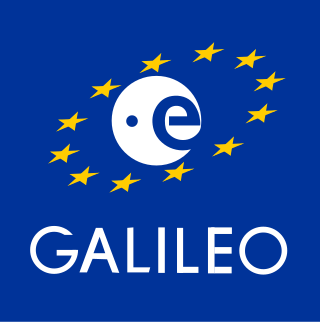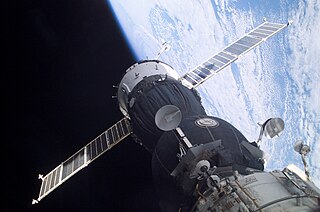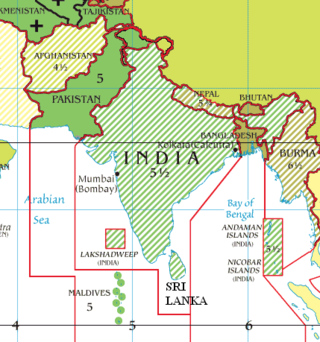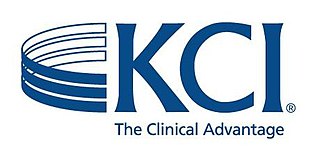Related Research Articles

The Global Positioning System (GPS), originally Navstar GPS, is a satellite-based radio navigation system owned by the United States government and operated by the United States Space Force. It is one of the global navigation satellite systems (GNSS) that provides geolocation and time information to a GPS receiver anywhere on or near the Earth where there is an unobstructed line of sight to four or more GPS satellites. It does not require the user to transmit any data, and operates independently of any telephonic or Internet reception, though these technologies can enhance the usefulness of the GPS positioning information. It provides critical positioning capabilities to military, civil, and commercial users around the world. Although the United States government created, controls and maintains the GPS system, it is freely accessible to anyone with a GPS receiver.

Galileo is a global navigation satellite system (GNSS) that went live in 2016, created by the European Union through the European Space Agency (ESA), operated by the European Union Agency for the Space Programme (EUSPA), headquartered in Prague, Czechia, with two ground operations centres in Fucino, Italy, and Oberpfaffenhofen, Germany. The €10 billion project is named after the Italian astronomer Galileo Galilei. One of the aims of Galileo is to provide an independent high-precision positioning system so European political and military authorities do not have to rely on the US GPS, or the Russian GLONASS systems, which could be disabled or degraded by their operators at any time. The use of basic (lower-precision) Galileo services is free and open to everyone. A fully encrypted higher-precision service is available for free to government-authorized users. Galileo is intended to provide horizontal and vertical position measurements within 1 m precision. Galileo is also to provide a new global search and rescue (SAR) function as part of the MEOSAR system.

The second is the unit of time in the International System of Units (SI), historically defined as 1⁄86400 of a day – this factor derived from the division of the day first into 24 hours, then to 60 minutes and finally to 60 seconds each.

The theory of relativity usually encompasses two interrelated physics theories by Albert Einstein: special relativity and general relativity, proposed and published in 1905 and 1915, respectively. Special relativity applies to all physical phenomena in the absence of gravity. General relativity explains the law of gravitation and its relation to the forces of nature. It applies to the cosmological and astrophysical realm, including astronomy.

Time is the continued sequence of existence and events that occurs in an apparently irreversible succession from the past, through the present, into the future. It is a component quantity of various measurements used to sequence events, to compare the duration of events or the intervals between them, and to quantify rates of change of quantities in material reality or in the conscious experience. Time is often referred to as a fourth dimension, along with three spatial dimensions.

The Bulletin of the Atomic Scientists is a nonprofit organization concerning science and global security issues resulting from accelerating technological advances that have negative consequences for humanity. The Bulletin publishes content at both a free-access website and a bi-monthly, nontechnical academic journal. The organization has been publishing continuously since 1945, when it was founded by Albert Einstein and former Manhattan Project scientists as the Bulletin of the Atomic Scientists of Chicago immediately following the atomic bombings of Hiroshima and Nagasaki. The organization is also the keeper of the symbolic Doomsday Clock, the time of which is announced each January.

A radio clock or radio-controlled clock (RCC), and often (incorrectly) referred to as an atomic clock is a type of quartz clock or watch that is automatically synchronized to a time code transmitted by a radio transmitter connected to a time standard such as an atomic clock. Such a clock may be synchronized to the time sent by a single transmitter, such as many national or regional time transmitters, or may use the multiple transmitters used by satellite navigation systems such as Global Positioning System. Such systems may be used to automatically set clocks or for any purpose where accurate time is needed. RC clocks may include any feature available for a clock, such as alarm function, display of ambient temperature and humidity, broadcast radio reception, etc.
Leidos, formerly known as Science Applications International Corporation (SAIC), is an American defense, aviation, information technology, and biomedical research company headquartered in Reston, Virginia, that provides scientific, engineering, systems integration, and technical services. Leidos merged with Lockheed Martin's IT sector, Information Systems & Global Solutions, in August 2016 to create the defense industry’s largest IT services provider. The Leidos-Lockheed Martin merger is one of the biggest transactions thus far in the consolidation of a defense sector. Leidos works extensively with the United States Department of Defense, the United States Department of Homeland Security, and the United States Intelligence Community, including the NSA, as well as other U.S. government civil agencies and selected commercial markets.

The National Physical Laboratory (NPL) is the national measurement standards laboratory of the United Kingdom. It sets and maintains physical standards for British industry.

Time dilation is the difference in elapsed time as measured by two clocks, either due to a relative velocity between them or due to a difference in gravitational potential between their locations. When unspecified, "time dilation" usually refers to the effect due to velocity.

HRL Laboratories is a research center in Malibu, California, established in 1960. Formerly the research arm of Hughes Aircraft, HRL is currently owned by General Motors Corporation and Boeing. The research facility is housed in two large, white multi-story buildings overlooking the Pacific Ocean.

Indian Standard Time (IST), sometimes also called India Standard Time, is the time zone observed throughout India, with a time offset of UTC+05:30. India does not observe daylight saving time or other seasonal adjustments. In military and aviation time, IST is designated E* ("Echo-Star"). It is indicated as Asia/Kolkata in the IANA time zone database.

The Hafele–Keating experiment was a test of the theory of relativity. In 1971, Joseph C. Hafele, a physicist, and Richard E. Keating, an astronomer, took four caesium-beam atomic clocks aboard commercial airliners. They flew twice around the world, first eastward, then westward, and compared the clocks against others that remained at the United States Naval Observatory. When reunited, the three sets of clocks were found to disagree with one another, and their differences were consistent with the predictions of special and general relativity.
General Atomics (GA) is an American energy and defense corporation headquartered in San Diego, California, specializing in research and technology development. This includes physics research in support of nuclear fission and nuclear fusion energy. The company also provides research and manufacturing services for remotely operated surveillance aircraft, including the Predator drones, airborne sensors, and advanced electric, electronic, wireless, and laser technologies.

The Quasi-Zenith Satellite System (QZSS), also known as Michibiki (みちびき), is a four-satellite regional time transfer system and a satellite-based augmentation system developed by the Japanese government to enhance the United States-operated Global Positioning System (GPS) in the Asia-Oceania regions, with a focus on Japan. The goal of QZSS is to provide highly precise and stable positioning services in the Asia-Oceania region, compatible with GPS. Four-satellite QZSS services were available on a trial basis as of 12 January 2018, and officially started on 1 November 2018. A satellite navigation system independent of GPS is planned for 2023 with seven satellites. In May 2023 it was announced that the system would expand to eleven satellites.
The Timation satellites were conceived, developed, and launched by the United States Naval Research Laboratory in Washington, D.C. beginning in 1964. The concept of Timation was to broadcast an accurate time reference for use as a ranging signal to receivers on the ground. On 31 May 1967, the Timation-1 satellite was launched. This was followed by the Timation-2 satellite launch in 1969. The results of this program and Air Force Project 621B formed the basis for the Global Positioning System (GPS). The Navy's contribution to the GPS program continued to be focused on ever more accurate clocks.
The GPS-aided GEO augmented navigation (GAGAN) is an implementation of a regional satellite-based augmentation system (SBAS) by the Government of India. It is a system to improve the accuracy of a GNSS receiver by providing reference signals. The Airports Authority of India (AAI)'s efforts towards implementation of operational SBAS can be viewed as the first step towards introduction of modern communication, navigation and surveillance / air traffic management system over the Indian airspace.

The Indian Regional Navigation Satellite System (IRNSS), with an operational name of NavIC, is an autonomous regional satellite navigation system that provides accurate real-time positioning and timing services. It covers India and a region extending 1,500 km (930 mi) around it, with plans for further extension. An extended service area lies between the primary service area and a rectangle area enclosed by the 30th parallel south to the 50th parallel north and the 30th meridian east to the 130th meridian east, 1,500–6,000 km (930–3,730 mi) beyond borders where some of the NavIC satellites are visible but the position is not always computable with assured accuracy. The system currently consists of a constellation of eight satellites, with two additional satellites on ground as stand-by.

Kinetic Concepts, Inc., (KCI) is a global corporation that produces medical technology related to wounds and wound healing. KCI produced the first product developed specifically for negative pressure wound therapy. In 2013, the company employed 5,000 people and marketed its products in more than 25 countries. Its headquarters is in San Antonio, Texas.

An atomic clock is a clock that measures time by monitoring the resonant frequency of atoms. It is based on atoms having different energy levels. Electron states in an atom are associated with different energy levels, and in transitions between such states they interact with a very specific frequency of electromagnetic radiation. This phenomenon serves as the basis for the International System of Units' (SI) definition of a second:
The second, symbol s, is the SI unit of time. It is defined by taking the fixed numerical value of the caesium frequency, , the unperturbed ground-state hyperfine transition frequency of the caesium 133 atom, to be 9192631770 when expressed in the unit Hz, which is equal to s−1.
References
- ↑ Forman, P (July 1985). "Atomichron: The atomic clock from concept to commercial product". Proceedings of the IEEE. 73 (7): 1181–1204. doi:10.1109/PROC.1985.13266. ISSN 0018-9219. S2CID 19716223. Archived from the original on 2007-10-21.
- ↑ "The Global Positioning System". Archived from the original (pdf) on 2010-05-20. Retrieved 2008-04-23.
- ↑ "Science Update". The Dallas Morning News. 1989-10-02.
- ↑ The Global Positioning System: The Path from Research to Human Benefit. National Academy of Sciences. 1996. p. 7.